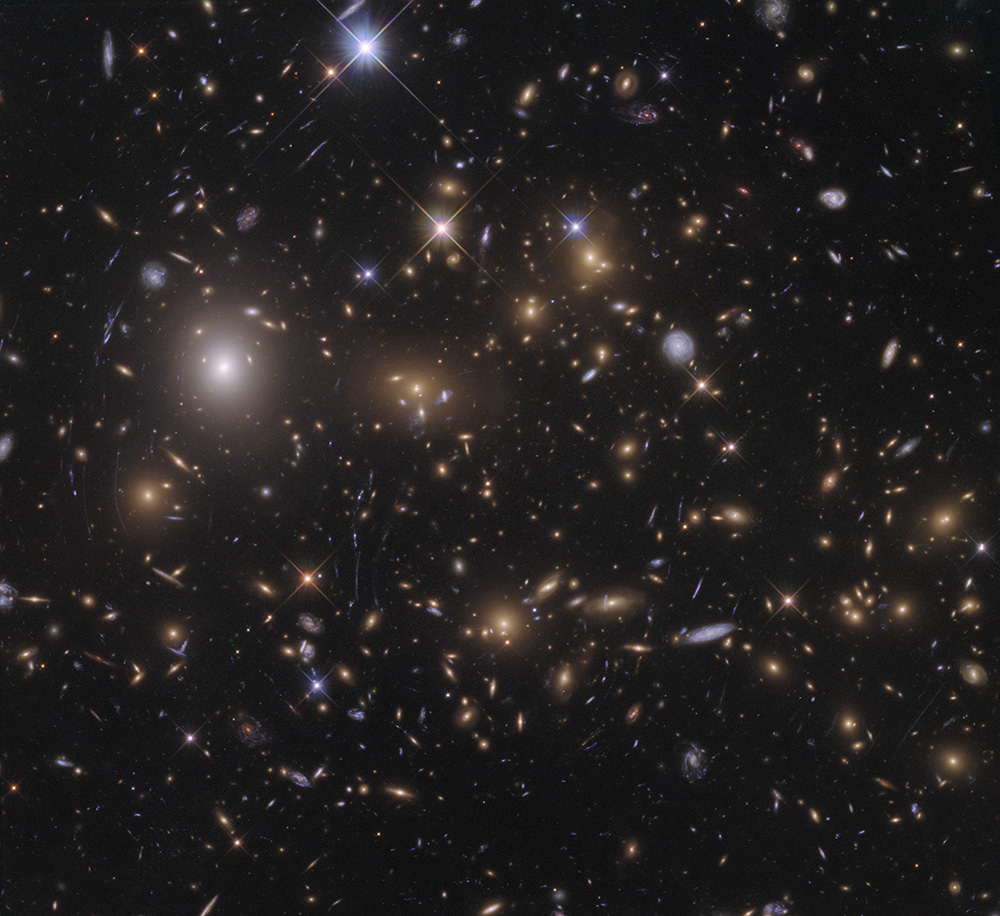
MACS J0717 (Epoch 2) (2015)
This is the final culmination of 154 Hubble orbits of observation for MACS J0717. Not a huge difference from Epoch 1, but it’s deep enough now to see some even fainter details. Plus I think I processed it even better this time. It looks smoother to me. The sinuous blue background galaxies are a little brighter and easier to see.
Looking at the largest elliptical galaxies, almost all of them are perturbed in some way, like they have recently consumed or interacted with a smaller neighbor. The shells which align more or less neatly with the long axis of them are indicative of absorption of a much smaller galaxy, which seems to be the case for all of the interacting ellipticals. One can almost imagine if time were sped up that this cluster would be a roiling ball of activity with the largest galaxies consistently snacking on smaller morsels. Also visible are many lenticular galaxies, seemingly devoid of star formation but still maintaining some semblance of their past spiral selves.
It is difficult to unflatten this image and imagine its depth. If you would like to try, then of course you should place the approximately 11 Milky Way stars in front. Then, imagine that many of the brighter, whiteish, undisturbed spirals are probably in the foreground. They are smaller and your brain would like to think that all smaller things are behind the larger ones, but that is not always the case. If they were in the cluster, they would probably be gravitationally disturbed and if they were behind, they would be strongly gravitationally lensed. It is difficult to differentiate them but this is a good way to do it visually, even if it is not terribly accurate. Next comes the massive cluster itself. One appreciates the massive dimensions of the elliptical galaxies knowing that they are more distant but still just as large or even larger than the foreground spirals. Finally, those hairlike streaks are all behind the cluster. Most of the smaller, dimmer objects are also very likely behind.
I previously posted the Epoch 1 data here.
Datasets can be found here:
archive.stsci.edu/pub/hlsp/frontier/macs0717/images/hst/v…
Red: WFC3/IR F105W + F125W + F140W + F160W
Orange: ACS/WFC F814W
Cyan: ACS/WFC F606W
Blue: ACS/WFC F435W
North is NOT up. It is 54.6° clockwise from up.
Copyright information:
Hubble data is public domain, but I put a lot of work into combining it into beautiful color images. The minimal credit line should read: NASA / ESA / J. Schmidt

This work is licensed under a Creative Commons Attribution 3.0 Unported License.


